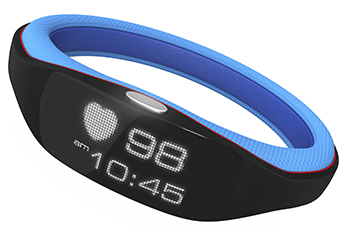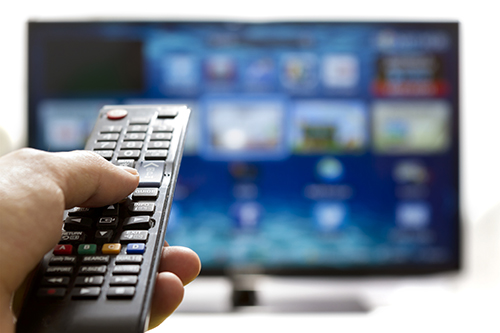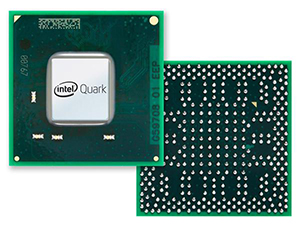Wearable devices are a hot topic these days, as illustrated by the new $5,000 “Make it Wearable” challenge recently issued by Intel. This challenge will reward both visionaries and builders who conceive of or construct wearable applications that can shift personal computing into new innovative directions. Wearable devices are now at the heart of just about every discussion related to the Internet of Things (IoT), and the full range of new capabilities pervasive connectivity can bring.
Some of these discussions often create more questions than answers. Perhaps that is natural given that we are still in the very early stages of their life cycle, but some questions need to be answered before a real “rollout” of wearable devices gets underway. For example, the wearable devices’ question on many minds these days is “Are wearable devices going to just be peripherals for a smart phone, or is there a more important role for them as part of the Internet of Things?” If we are really moving toward a more pervasive deployment of intelligence into just about everything in our environment, shouldn’t this apply to wearable devices too? In order to better ponder this question, let’s look at some of the key functions we can expect wearable devices to provide and some use cases to see how massively interconnected devices could provide additional capabilities.
Some of the first functions that wearable devices are already delivering are related to identification and security. Maybe you don't consider the badge you wear at work a wearable device, but it does provide identification and security features useful within the work environment. Some advanced badges even include some biometric capabilities (such as fingerprint activation, so only the badge’s owner can use it to open a locked door) to improve security. Badges can also include capabilities for location sensing, useful in emergencies to make sure everyone has successfully evacuated the building. A wearable bracelet provides a more reliable indication of location since it is less likely to be left in a jacket on the back of a chair.

Health- and fitness-oriented wearable devices that offer biometric measurements such as heart rate, perspiration levels, and even complex measurements like oxygen levels in the bloodstream are also becoming available. Technology advancements may even allow alcohol levels or other similar measurements to be made via a wearable device. The ability to sense, store, and track biometric measurements over time and then analyze the results, is just one interesting possibility. Tracking body temperature, for example, might provide an early indication of whether a cold or the flu is on the way.
Technology Roadmap: The Internet of Things
Some additional capabilities of wearable devices are more mundane, but might also provide information that could be useful in adjusting environmental controls. Wearable devices could tell if you have your jacket on in the car or if it’s just in the back seat (perhaps by placing a few stress measurement device threads within the fabric of the jacket). This could be helpful in keeping the car temperature at a comfortable level. If your wristband can measure perspiration levels that could also be used as a data point for adjusting both temperature and humidity.
The above examples could all use a smart phone as the central control for delivering these capabilities, but is that really the most efficient approach? Would it be better if Internet of Things (IoT) devices could communicate directly? You certainly don't want to be required to use your smart phone to okay every transaction your wearable devices wish to make. Perhaps a better model is that the smart phone can help set up the modes of operation you want to support, as well as the privacy level you wish to enforce. Once the communication “strategy” is in place, all the devices can communicate in the ways you have allowed.
Let’s look at a simple example. Say you are wearing your smart watch, which is capturing your biometrics readings so that you can get an early warning of a possible illness (maybe because you were just on an airplane). Let’s further assume that you took the plane trip for a job interview and you are on your way into your first meeting. Do you want your biometric readings to be available to the person conducting the interview? Probably not. You could use your smart phone to protect your real-time biometric readings (and any history of readings) from access by the interviewer. Alternately, if your meeting wasn’t for a job interview, but a yearly check-up by your doctor, you would want to allow access to all your biometrics.

Wearable devices could be allowed to automatically connect to devices around the home too. Perhaps you have a preferred lighting level when watching TV from a particular chair. You could turn on the TV and your wearable device could help adjust the lighting level from the connected LED lights within the room. An intelligent house might even support automatically blocking light from windows that created glare on the TV. Even the backlighting on the LCD TV screen could be adjusted and all settings optimized for saving energy, as well as creating the most favorable viewing experience. All these interactions could be done automatically, directly between devices, once the overall strategy has been set via a smart phone interface.
Technology Roadmap: The Internet of Things
The promise of the IoT is based on pervasive connectivity and when associated with large collections of connected devices, significant benefits can accrue. How can wearable devices benefit from this concept too? For example, could your wearable devices interact with the devices of others in a crowd? Would you want to know if someone sitting near you on the train had a high fever? Clearly you might want to know this, but the person with the fever might not want to broadcast it. If you both used the same healthcare provider; however, maybe that information would be shared, perhaps controlled via a smart phone filter. Privacy issues will continue to be a big concern for years to come, but there will be areas where some pervasive sharing of biometrics would be useful, or at least somewhat entertaining.

For example, consider a concert with a big crowd on the dance floor. If you were there, would you allow the DJ to access your heart rate (along with the heart rates of everyone in the crowd) to help choose the music (or to judge the effect his music choice has on the crowd)? That limited sharing of biometrics could be useful, and perhaps even “required” to get into the venue. It is conceivable that our wearable devices could even be used to get everyone dancing “in synch” as part of a new concert experience. Your wearable device could have an accelerometer included so your movements could be coordinated with others on the concert floor. The DJ would select not only music but suggested “dance moves” as accompaniment. LEDs could even be included in your concert wearables as visual cues to show you what to do (or not do). It could be a massive Dance Dance Revolution experience.
A common element to these pervasive designs will be low power. One approach to achieving low power will be through energy harvesting. In the above example, harvesting energy from dancing and moving around will be easy, but in most cases battery-based designs will be the implementation of choice. You might think that battery operation will be a significant limitation, but for wearables at least, the high speed with which fashions change will mean that the battery is probably not the limiting factor. In fact, a wearable device will probably go out of fashion before the battery does! For wearable devices that have longer lifetimes, battery technology will undoubtedly advance to give us more power in smaller space and to more easily allow charging, perhaps from a short distance. Watches, armbands, and similar wearable devices could be easily recharged and provide the longer-term, higher-power functions required.
Clearly for these types of pervasive interactions, very intelligent and low-power MCUs will be required. High-end IoT applications will require significant processing and interface capabilities (including wireless options) along with advanced security capabilities such as secure boot. These advanced applications could use some of the newest devices, like the Intel Quark X1000 processors, to also leverage much of the existing software base to simplify development. Supporting a range of connectivity options allows for bridging and aggregation of content from multiple sources, which will reduce power requirements for the “peripherals” in the wearable device network.

Lower-end applications would just need to support connections to simple sensors, security, and low-speed wireless access all from a low-cost battery. MCUs like the Silicon Labs EFM®32 Zero Gecko can operate for long periods of time on very low current, so they can be easily used in wearable applications where sensing, processing, and storage are required at biometric frequency time intervals. Even these sensor-oriented devices can use some periodic processing power; however, since minimizing wireless data transmission times will offer the largest system power savings.
No matter what direction wearable devices evolve over the next few years, it seems that they will need to be a more integrated element in the IoT in order to provide the wide range of features we’re all expecting.
Advertisement





